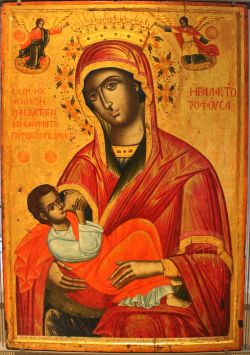COLLECTIONS OF COPTIC MANUSCRIPTS
EGYPT
Cairo (Coptic Museum)
Cairo (Institut français d’archéologie orientale)
Coquin, R.-G., “Le fonds copte de l’Institut français d’archéologie orientale du Caire,” in Écritures et traditions dans la literature copte. Journée d’études coptes, Strasbourg 28 mai 1982 (Cahiers de la bibliothèque copte, 1; Louvain 1983) 9-18
Louis, C., Catalogue raisonné des manuscrits littéraires coptes conservés à l’IFAO du Caire. Contribution à la reconstitution de la bibliothèque du Monastère Blanc (unpublished Ph.D. thesis, École Pratique des Hautes Études, Section des Sciences Religieuses: Paris)
FRANCE
Paris (Bibliothèque Nationale)
Delaporte, L.J., “Catalogue sommaire des manuscrits coptes de la Bibliothèque Nationale,”
Revue d’Orient Chrétien 14 (1909) 417-423, 15 (1910) 85-96, 133-156, 392-397, 16 (1911) 85-99, 155-160, 239-248, 368-395, 17 (1912) 390-394, 18 (1913) 84-91 Lucchesi, E., Répertoire des manuscrits coptes (sahidiques) publiés de la Bibliothèque nationale de Paris (Cahiers d’Orientalisme, 1; Geneva: Patrick Cramer, 1981)
Bouvarel-Boud’hors, A., Catalogue des fragments coptes vol. 1: Fragments bibliques nouvellement identifiés (Paris: Bibliothèque Nationale, 1987)
GERMANY
Berlin (Papyrussammlung)
GREAT BRITAIN
London (British Library)
Layton, B., Catalogue of Coptic Literary Manuscripts in the British Library Acquired Since the Year 1906 (London: British Museum, 1987)
Zanetti, U., “Un catalogue des additions coptes des Londres,” Analecta Bollandiana 106 (1988) 171-181
Manchester (John Rylands Library)
ITALY
Naples
Buzi, P., Catalogo dei manoscritti copti borgiani conservati presso la Biblioteca Nazionale “Vittorio Emanuele III” di Napoli (Accademia dei Lincei – Memorie, Ser. IX, 25/1; Rome: Scienze e lettere, 2009)
Rome
NETHERLANDS
Leiden (Rijksmuseum van Oudheden)
Pleyte, W. & Boeser, P.A.A., Manuscrits coptes du Musée des Pays-Bas à Leide (Leiden: E.J. Brill, 1897)
RUSSIA
Moscow
Elanskaya, A.I., The Literary Coptic Manuscripts in the A.S. Pushkin State Fine Arts Museum in Moscow (Supplements to Vigiliae Christianae,18; Leiden: E.J. Brill, 1994)
GRAMMAR:
LITERATURE
Pachomius
Isaiah of Scetis
The monk Augustinos, Tou hosiou patros hemon abba Esaiaou logoi 29 (Jerusalem, 1911; 2nd ed. S. Schoinas, Volos, 1962)
Hardy, E. R., “A Fragment of the Works of the Abbott Isaias,” Annuaire de l’Institut de Philologie et d’Histoire Orientales et Slaves 7 (1944) 127-140
Guillaumont, A.,
L’Asceticon copte de l’abbé Isaïe. Fragments sahidiques édités et traduits (Bibliothèque d’études coptes, 5; Cairo 1956)
part 1;
part 2Draguet, R., Les cinq recensions de l’Ascéticon syriaque d’abba Isaïe 4 vols. (CSCO, 289-290, 293-294. Scriptores Syri, 120-123; Louvain: Secrétariat du CorpusSCO, 1968)
Chitty, D.J.,
“Abba Isaiah,”Journal of Theological Studies n.s., 22 (1971) 47-72
Lucchesi, E., “Le dossier d’Apa Zénobe. Addenda et corrigenda. Appendice II: Un Logos inconnu d’Isaïe de Scété. Chenouté, Isaïe et Moïse,” Analecta Bollandiana 117 (1999) 67-80
Nessim Youssef, Y., “Un complément de l’Asceticon copte de l’Abbé Isaïe,” Vigiliae Christianae 55 (2001) 187-190


































